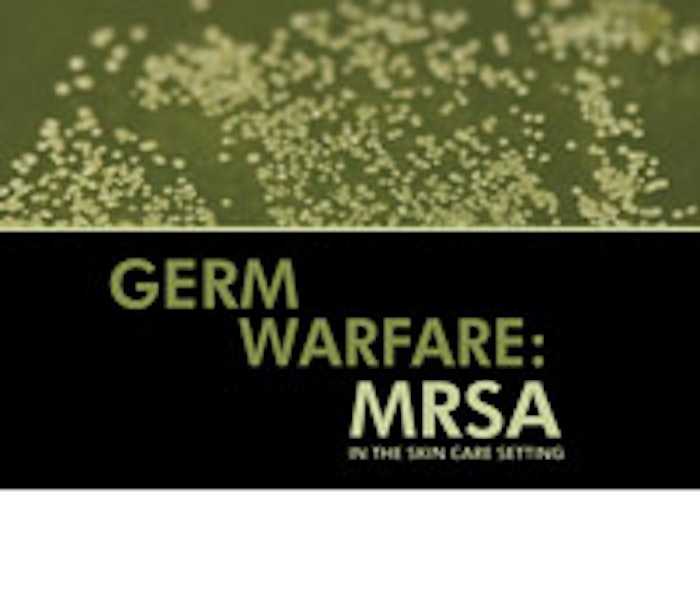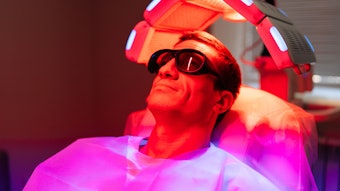
Throughout the past several decades, the development of antibiotic-resistant infections has become one of the world’s most serious health threats.
Imagine if the medical community became unable to treat infections, and what an enormous impact it would have on life and human existence. Although this scenario is far from a reality, in the United States, the plight and fight is all too real, with super bugs, antimicrobial resistance (AMR) and the methods in which people may resist them.
What is AMR?
AMR is the resistance of a microorganism to an antimicrobial medicine or antibiotic that, under normal circumstances, would treat an infection. For many years, AMR infections have been on the rise, creating mutations and various strains of resistant bacteria, fungi, viruses and parasites. These mutations, along with circumstantial health risks, have been able to evade the activity from antimicrobial medicines, such as antibiotics, antifungals and antivirals. Each year in the United States, at least 2 million people acquire serious infections with bacteria that are resistant to one or more of the antibiotics designed to treat antibiotic- and antimicrobial-resistant infections.1
AMR infections continue to be of great concern in the medical community in that traditional treatments and historically effective protocols have become ineffective, which has increased the risk of these infections being spread throughout the general public. The advancement of these resistant strains occurs when the microorganisms are exposed to antimicrobial drugs, and resistant traits can be shared and exchanged between certain types of bacteria. The enormous mismanagement and overuse of antibiotics has fueled this phenomenon. The evidence of such is supported by the fact that AMR infections often are slow to or fail to respond to conventional treatments, resulting in prolonged illness, complications, increased health care costs and, in some cases, death.
Methicillin-resistant Staphylococcus aureus (MSRA). The highly antibiotic-resistant bacteria MSRA is now considered an opportunistic, or community acquired (CA), infection. CA-MRSA infections occur in an individual who has not been hospitalized within the past year, or who has had a recent medical or surgical procedure. Nosocomial, or hospital acquired (HA), MRSA occurs in people who have had frequent or recent contact with hospitals or health care facilities within the previous year, who have recently undergone an invasive medical procedure or who are immunocompromised.
At present, MRSA originates more frequently outside of the hospital, implying that it is transported into the medical facility either by the CA- or HA-MRSA genotype. Although CA- and HA-MRSA have distinct clinical differences, they both may be transmitted through direct skin-to-skin contact, or contact with shared items or surfaces that have been touched by an individual’s colonized or infected skin.
Most MRSA infections occur through direct physical contact with a break in the skin. If no break in the skin is present, contact with an infected host or contaminated objects may result in colonization. Susceptibility to MRSA infection is also dependent on factors, such as immunity and general state of health.
Panton-Valentine leukocidin (PVL) MRSA. This more virulent strain is a toxic substance produced by some strains of Staphylococcus aureus (SA), which is associated with an increased ability to cause disease and the manifestations of the disease. PVL can be produced by both methicillin-sensitive (MSSA) and MRSA strains of SA and may cause necrotizing fasciitis, or flesh-eating bacteria. It has been postulated that PVL has emerged as a result of the quantity of MRSA outbreaks and that more resistant strains have developed due to the overuse of antibiotics.
In 2004, the Centers for Disease Control and Prevention (CDC) established and summarized imperative strategies for the clinical and public health management of MRSA. Of particular importance was the emphasis placed on the education of skin and soft tissue infections (SSTIs). The severity of SSTIs can range from mild, superficial infections to the drainage of lesions by surgical incision. All skin care professionals and physicians should be suspicious of any lesion that resembles a spider bite, and should refer their client for medical evaluation immediately. SSTIs and potential dermal pathways for infection include: furuncles, carbuncles, abscesses, folliculitis, chapped skin, thermal burns, impetigo, boils and pustules.
In the skin care setting, the guarded assessment of the skin and qualifying the client for a service with regard to state of health is paramount. The behavior of aggressive pustule evacuation and intensive exfoliation techniques without personal protective equipment is risky and may pose a health threat to yourself, the client and others.
About hand sanitizers
In 1987, the CDC recommended universal precautions for when physicians have contact with blood, skin and certain body fluids, which evolved into the Blood Borne Pathogen Act. Wearing gloves is the safest precaution and preferred method of prevention regarding protection from microbes and infection in the skin care setting.
One of the most effective strategies for dealing with CA-MRSA is preventing its emergence in the first place. An information sheet from the CDC cites, “universal good hygiene practices [are] the key to preventing MRSA infections ... The first step in this process is proper hand-washing with soap and water, or an alcohol-based hand sanitizer.”2
Hand sanitizers may assist in decreasing the number of microorganisms present; however, they are not a guarantee. The antimicrobial agents in most hand sanitizers are alcohol derivatives, such as ethanol, isopropanol and n-propanol, and are available in varying concentrations. Ethanol alcohol, at a concentration of 60% or greater, is the most effective against bacteria. However, the U.S. Food and Drug Administration (FDA) has not approved any product claiming to prevent infection from MRSA, Escherichia coli (E. coli), salmonella or H1N1 that a consumer can purchase over the counter (OTC), according to Deborah Autor, compliance director at the FDA’s Center for Drug Evaluation and Research.2
For some, the consistent use of hand sanitizers may present unpleasant side effects, such as contact irritation, itching and dryness. OTC hand sanitizers may create a sense of false protection, because many of them do not specify the actual percentage of alcohol and may be inefficient. Skin care professionals should play close attention to the ingredients of hand sanitizers, along with which ones are most effective while maintaining the integrity and immunity of their own skin.
Look to the future
Pharmacists, scientists and physicians are working together to find the best solutions to protect from super bugs. New antibiotics are being developed to attempt to fool the evasive microbes. According to Science Daily, a new nanosponge technology vaccine is in development that is meant to absorb a dangerous pore-forming toxin produced by MRSA. The nanosponges at the foundation of the experimental “toxoid vaccine” are biocompatible particles made of a polymer core wrapped in a red blood cell membrane. Each nanosponge’s red blood cell membrane seizes and detains the SA toxin. Toxoid vaccines protect against a toxin or set of toxins, rather than the organism that produces the toxin.3
The role skin care professionals play in advising clients regarding the safety, health and welfare of their skin is an important one. Estheticians remain inspirational figures to clients as sources of guidance and trust, as educators, and as viable parts of and liaisons to the medical community—whether they work in a medical setting or not. Estheticians exemplify health in many ways, and the examples set and practiced solidify positive professional reputations. As the skin care industry continues to intellectually prosper, so will the responsibilities to enrich the knowledge associated with being a licensed skin care professional.
REFERENCES
- www.cdc.gov/drugresistance/threat-report-2013/pdf/ar-threats-2013-508.pdf
- www.fda.gov/ForConsumers/ConsumerUpdates/ucm251816.htm#2
- www.sciencedaily.com/releases/2013/12/131201140205.htm
(All accessed May 19, 2014)
GENERAL REFERENCES
cid.oxfordjournals.org/content/46/Supplement_5/S368.full?newwindow=true
www.the-dermatologist.com/content/managing-ca-mrsa
(All accessed May 19, 2014)
Editor’s note: The information in this article is presented for educational purposes only and is not meant to provide advice, diagnose, or treat a disease or health condition. Skin Inc. magazine recommends that, for the assessment and diagnosis of any health condition or concern, estheticians should instruct clients to contact their physician.
Erin Madigan-Fleck is a licensed esthetic instructor and esthetician with more than 30 years of experience in the esthetic and wellness industries She is a nationally certified natural health professional and holds a doctorate degree in naturopathic medicine. She is the international director of education at Institut’ DERMed College of Advanced Aesthetics in Atlanta.










